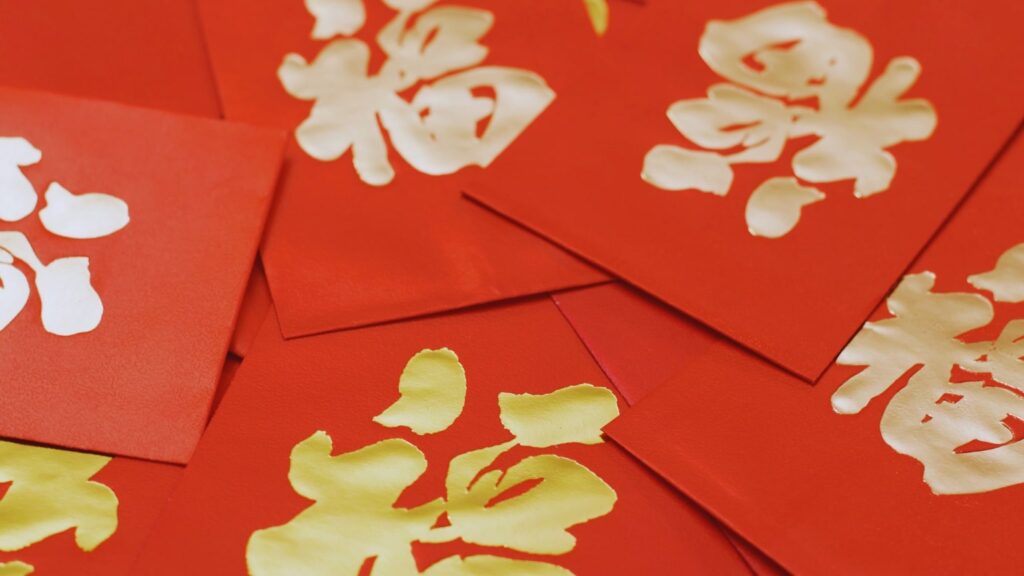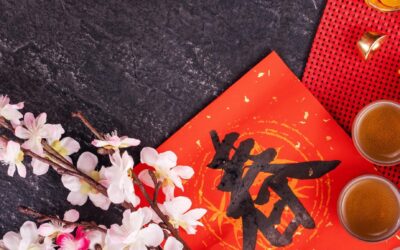
Chinese New Year, also known as the Spring Festival, is one of the most significant and widely celebrated festivals in Chinese culture. This vibrant and auspicious occasion is marked by a myriad of customs, traditions, and rituals. One of the most cherished traditions during Chinese New Year is the exchange of red packets, known as “Ang Pao” in Mandarin. These small red envelopes, filled with money, hold deep cultural and symbolic significance in the hearts of Chinese families. In this article, we delve into the rich history and meaning behind the giving and receiving of Ang Pao during Chinese New Year celebrations.
There are different names for red packets in Chinese and Hokkien like Ang Bao, Ang Pow, Ang Pao, Hong Bao, and Hong Pao.
The Origins of Ang Bao
The tradition of Hong Bao dates back to ancient China and is steeped in both folklore and history. There are several legends and stories that explain the origin of this beloved custom.
- The Nian Monster: According to one legend, there was a fearsome monster named Nian that would terrorize villages and devour their crops, livestock, and even children every New Year. Villagers discovered that Nian was afraid of the colour red and loud noises. To protect themselves, they started pasting red paper on doors and windows and setting off firecrackers. Over time, this evolved into giving red envelopes filled with money to children as a form of protection and blessing.
- The Jade Emperor: Another legend involves the Jade Emperor, the ruler of heaven in Chinese mythology. It is said that the emperor distributed money to children on New Year’s Eve to bless and protect them from evil spirits. To mimic this celestial tradition, parents began giving red envelopes to their children as a symbol of good fortune.
Symbolism and Significance
Ang Pao carries profound symbolic meanings that resonate deeply with the Chinese community. Understanding the significance of these red envelopes sheds light on the customs and beliefs associated with Chinese New Year.
- Warding Off Evil Spirits: The colour red is believed to have the power to ward off evil spirits and bad luck. By giving and receiving red packets, people seek protection from negative forces in the coming year.
- Blessings and Good Wishes: Ang Pao is a gesture of goodwill and blessings. When elders give red envelopes to younger family members, they are essentially imparting their wisdom, bestowing blessings for a prosperous year ahead, and expressing their love and care.
- Fulfilling Filial Duty: For the younger generation, receiving Ang Pao from parents, grandparents, and other elders represents a recognition of their filial piety and respect for their elders. It is a way of honouring family bonds and traditions.
- Financial Prosperity: Money placed inside the red packets is considered a symbol of wealth and prosperity. It is believed that the money inside Ang Pao can bring financial luck and success to the recipients.
- Equalizing Blessings: Chinese culture values the concept of fairness and equality. Ang Pao helps ensure that blessings are equally distributed among family members, regardless of age or social status.
The Etiquette of Giving and Receiving Ang Pao
The exchange of Ang Pao is guided by a set of etiquettes and customs that have been passed down through generations. These customs help maintain the harmony and respect within families during Chinese New Year.
- Use Crisp, New Bills: It is customary to place brand new, crisp bills inside red packets. This symbolizes a fresh start and ensures that the money remains pristine.
- Even Numbers: The amount of money given should consist of even numbers, as odd numbers are associated with funerals and are considered unlucky.
- Respectful Gestures: When receiving Ang Pao, it is polite to use both hands to accept the envelope as a sign of respect and gratitude. Always thank the giver with a smile.
- Timing: Ang Pao is typically exchanged on New Year’s Eve or during the fifteen days of the Spring Festival. It is considered inauspicious to give or receive red envelopes outside this period.
- Generosity: The amount of money given in Ang Pao varies based on the relationship and age of the recipient. Elders tend to give more substantial amounts to younger family members.
- Married Couples: Married couples are expected to give red packets to unmarried individuals, signifying their good wishes for the recipient to find love and get married soon.
Modern Adaptations
While the core tradition of Ang Pao remains unchanged, modern times have seen some adaptations to this ancient custom. Today, digital red envelopes have become increasingly popular, with people sending money electronically via mobile payment apps and social media platforms. This modern twist on Ang Pao allows friends and family to exchange blessings and gifts, even when physically distant.
Buy Chinese New Year Goodies Singapore
Don’t miss out on the delectable delights of Chinese New Year! Elevate your celebrations by indulging in our exquisite range of Chinese New Year goodies in Singapore. From classic pineapple tarts to mouthwatering love letters, our treats are the epitome of festive flavours and tradition. Share the joy with your loved ones or present them as tokens of goodwill. Make this Lunar New Year truly special with our premium goodies, and let the spirit of prosperity and togetherness fill your home. Shop now and embrace the taste of tradition!
Conclusion
The tradition of Ang Pao in Chinese New Year celebrations beautifully encapsulates the essence of this festive season – a time for family, blessings, and hope for the future. Beyond the monetary value, the exchange of these red envelopes represents the enduring love and respect between generations. As we continue to embrace this cherished tradition, may the spirit of Chinese New Year bring happiness, prosperity, and good fortune to all who celebrate it.



